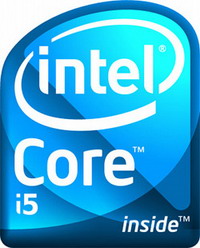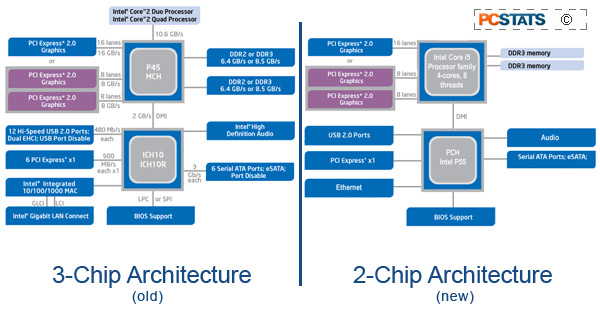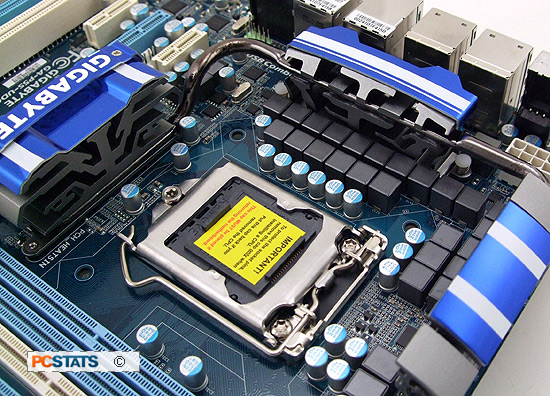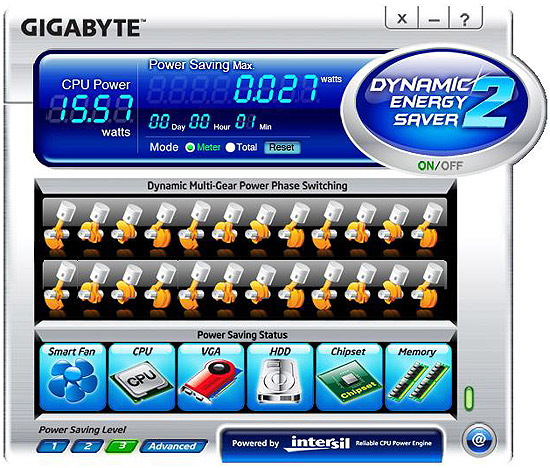 Intel system architecture has
traditionally consisted of a three chip solution; the processor, a memory controller
hub (MCH) also known as the Northbridge chipset, and I/O controller hub (ICH)
commonly called the Southbridge chipset. This
CPU-Northbridge-Southbridge arrangement happily
survived many years of upgrading intact.
Intel system architecture has
traditionally consisted of a three chip solution; the processor, a memory controller
hub (MCH) also known as the Northbridge chipset, and I/O controller hub (ICH)
commonly called the Southbridge chipset. This
CPU-Northbridge-Southbridge arrangement happily
survived many years of upgrading intact.
Yet as memory speeds increased, CPUs gained extra processing
cores and videocards grew more powerful, the interconnects that allowed all
these components to communicate increasingly became swamped with data. The
solution Intel implemented was to move the memory controller from a discreet
chipset directly onto the processor itself - a technique that AMD had opted for
several years prior with its Athlon 64 processors.
An integrated memory controller was introduced for the Intel platform with
the high end Core i7 'Nehalem' processor about a year ago. By moving the memory
controller onto the CPU, Intel simplified its platform to the
processor-southbridge architecture we see today.
The Intel Core i5 'Lynnfield' P55 platform follows in these footsteps. Here's
a block diagram to illustrate the differences between legacy Intel platforms
(left) and the current "Lynnfield" platform (right) that underpins the Core i5
processor and Intel P55 Express chipset. The main difference is that tasks
previously handed by the Northbridge chipset are now rolled into the Core i5
processor proper.

Intel's P55 Express chipset integrates both the memory
controller and sixteen PCI Express 2.0 lanes on to the die of the "Lynnfield"
CPU. The P55 Express Platform Controller Hub has eight further PCI Express lanes
at its disposal. This shift in the PCI Express graphics sub-system doesn't have
a huge impact on end-users, most P55-based motherboards still have two or three
PCI Express x6 videocard slots that can be run in (x16/x4) or (x8/x8/x4) mode,
the only change is that now the first two slots are handled directly by the CPU.
 For gamers, both NVIDIA SLI and ATI CrossfireX multi-videocard technologies
are supported by Intel P55 Express chipset, though implementation varies with
each motherboard. Socket-1156 "Lynnfield"-compatible motherboards are
DDR3-exclusive, and support memory speeds from DDR3-800 up to DDR3-1333, with
overclocking going all the way up to DDR3-2000+ in some cases.
For gamers, both NVIDIA SLI and ATI CrossfireX multi-videocard technologies
are supported by Intel P55 Express chipset, though implementation varies with
each motherboard. Socket-1156 "Lynnfield"-compatible motherboards are
DDR3-exclusive, and support memory speeds from DDR3-800 up to DDR3-1333, with
overclocking going all the way up to DDR3-2000+ in some cases.
Since Intel's P55 Express doesn't have too many roles left to do (since
graphics and memory communication are now handled by the CPU), it actually
doesn't need a very fast link to the processor. Instead of equipping the Intel
P55 express chipset with a complex and expensive-to-produce QPI link, Intel has
instead selected a slower 2.0GB/s DMI link for the Intel P55 Platform Controller
Hub to communicate with the processor. Both northbridge and southbridge have
been merged into what Intel is now calling the P55 Platform Controller Hub.
Storage and media interface capabilities are pretty similar to that of
Intel's well-known ICH10R southbridge, which include support for fourteen USB
2.0 ports, six SATA 3Gb/s ports with support for RAID 0/1/5/10 and Gigabit
Ethernet.
Gigabyte Smart 6 Suite
Gigabyte his bundling a suite
of novel software and hardware technologies with motherboards based on Intel's
P55 Express chipset. Called 'Smart 6' this suite of software programs work with
Gigabyte's motherboards to speed up and expand the capabilities of the PC
system.
For quite some time, Gigabyte has placed two Basic
Input Output System (BIOS) chips on its motherboards. The secondary BIOS chip
works as a physical backup should the primary BIOS chip fail. With Smart
DualBIOS, Gigabyte has doubled the memory size from 8MB up to 16MB, and the
extra memory means that these BIOS chips can now do some new tricks.

